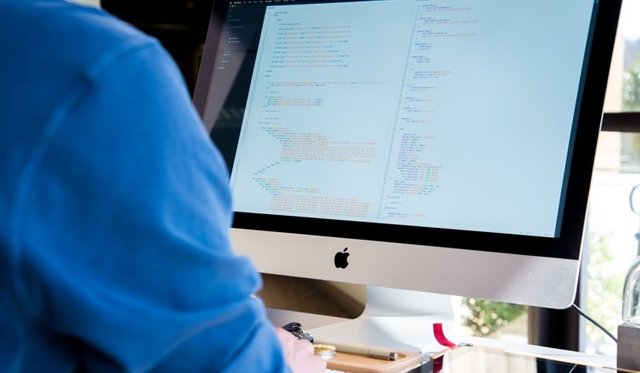
Approximately a year ago Telegram announced the company’s plans to release a brand new custom decentralized network - Telegram Open Network (TON). Back then there was a whitepaper-like technical document published, that supposedly exposes this network’s architecture principles and gives the definition of its main components and modules. Let’s get a brief look at them:
- TON Blockchain - the core of all the network. Proof-of-stake consensus protocol, a master chain and up to 292 accompanying blockchains;
- TON P2P Network - gives access to the TON multi-blockchains;
- TON Storage - built on P2P Network independently from the Blockchain, the technology can be compared with torrents;
- TON Proxy - a service aimed at building the users’ anonymity and privacy. The main difference: any packet can be transferred non-directly through intermediary “tunnels” with additional encryption (e.g. I2P, TOR);
- TON DHT - distributed hash-table that stores arbitrary values. This table is not encrypted;
- TON Services - a platform for arbitrary services. This is a sort of browser with familiar URLs interface, acts like the Internet, and the whole logic is contained in the smart-contracts;
- TON DNS - transforms the addresses, names, smart-contracts, nodes and the services into 256-bit addresses;
- TON Payments - within the TON users will not only be able to proceed transaction in GRAM (the Teleram’s official cryptocurrency), but also ETH and ETH-based tokens probably.
Ever since this document was “leaked”, no news has appeared until recently someone has posted a link in one of the non-official TON channels. If you click on this link, you will find materials for the Telegram’s Network test-client, namely:
- Ton-test-liteclient-full.tar.xz - source for the TON Blockchain Test Network Lite Client with all third-party libraries included;
- Ton-lite-client-test1.config.json - configuration file for the Lite Client;
- README - consists of the general info on how to compile and run the Client;
- HOWTO - a step-by-step instruction on how to create smart contracts via the Client;
- ton.pdf - an updated whitepaper with a technical review of the network;
- tvm.pdf - has a technical description of the TON Virtual Machine;
- tblkch.pdf - contains a technical description of the TON Blockchain;
- fiftbase.pdf - includes a description of a new Fift language designed for smart-contract creation in TON.
We carefully remind you that this was posted in an unofficial channel, so all of this can turn out to be fake.
In order to install the Lite Client successfully, make sure you have:
- The latest versions of make and cmake ( at least 3.0.2);
- OpenSSL (including the C header files);
- G++ or Clang.
At the moment there are only a few commands available in the Lite Client:
- help - show the list of commands;
- quit - finish the session;
- time - show current server time;
- status - show the connection to the local DB status;
- last - update the blockchain state (upload the last block). It’s important to run this command before executing any query in order to make sure you see the current network state;
- sendfile <filename> - load a local file into the network. Basically, this is how the interaction with the TON works including smart-contract creation and money transfer requests;
- getaccount <address> - get the current state of the specified account;
- privkey <filename> - upload a private key from a local file.
Now let’s look closer at the most interesting part - the stack-language Fift created by the Telegram team:
- It has a familiar syntax were there are words separated either by pressing space or by breaking lines;
- The digits in this language are 257-bit integers, no fractional numbers available.Only rational fractions can be used;
- The “pioneers” of the language admit that it looks very similar to the Assembler;
- All the words used in the language can be found in the standard library in a file Fift.fif.
So what can you actually already do with this Telegram Network? By far it works in the test-net, and you can create an account, create outbound transactions, build smart-contracts and make requests to an already created smart-contract (file testgiver.fif) that can transfer to your account up to 20 gram just for free in order to enable testing the functionality.
Today the Telegram Open Network Client looks just like an ordinary console with command lines. However, even with the current set of functionality there is a possibility to make it work in with a more friendly user interface. However, this is exactly what Telegram is going to make via implementing the blockchain technology functionality as a part of the messenger we all know. Anyway, let’s first of all wait for the official approval of the materials we already have in public access and we’ll see how the network will be developed further. Stay tuned!
By the way, if you have your own ideas (maybe you want to beat TON and become the first one to build a global decentralized network, or perhaps build a socially-useful blockchain-based platform) - Smartym Pro is one of the top blockchain development companies, and we are able to assist you with Blockchain projects of any complexity level.
Congratulations @smartum! You received a personal award!
You can view your badges on your Steem Board and compare to others on the Steem Ranking
Vote for @Steemitboard as a witness to get one more award and increased upvotes!
Downvoting a post can decrease pending rewards and make it less visible. Common reasons:
Submit